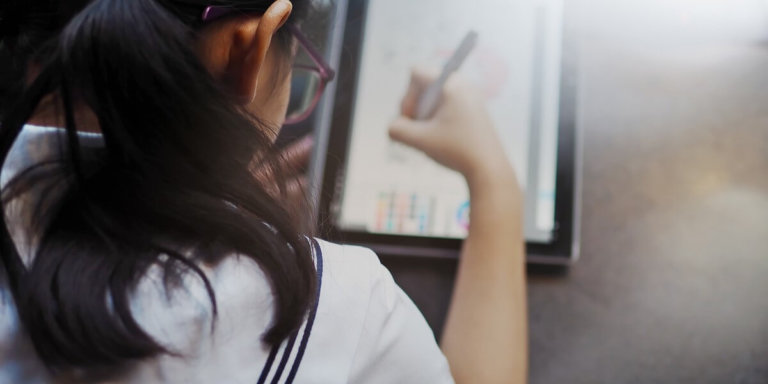
In the not-so-distant past, schools and educators advocated STEM education to close the digital skills gap and ensure students are job-ready once they graduate.
While STEM is still important, it has been expanded to include the arts – known as STEAM education.
This is because arts integration in schools equips students with certain skills that will be useful and vital to succeed in an uncertain future, such as creativity and innovative thinking.
Digital art classes are a good way to develop transferable skills in kids and equip them for all types of jobs.
Closing the information gap with digital art
I went to the Tokyo Digital Art Museum and they had this kids exhibit where you can draw fish and have them scanned into the tank so this was my contribution pic.twitter.com/4FlMmudMtN
— Michal (@Miexriir) December 31, 2018
Cedrick Dawson, a former teacher at G-Star Star School of the Arts in Palm Springs, founded the Dawson Digital Art School four years ago for this purpose.
Seeing that students were at risk of being inadequately prepared for the future workplace, he “made it his mission to close the information gap and provide local students with the digital skills needed to succeed in multiple industries,” according to PalmBeachPost.
The Dawson Digital Art School teaches students from elementary to college-level 3D modelling and animation skills used in professions such as arts and entertainment, gaming, architecture and interior design.
He designs online curricula that suits different learning styles, scaffolding lessons and differentiating instruction according to age groups.
He said, “If you look at the technology in life, it’s changing around us, it’s rapid. We see technology used on our cellphones, from emojis being animated — those are all 3D models. If you think about the augmented reality that’s on your cellphone, those are 3D models — they’re lit and textured in a software that we use.”
According to EdTech Magazine, “Educators see tools such as Adobe Creative Cloud and Spark for Education as ways to help students use the arts to build those needed problem-solving skills.”
Digital art tools help students build these skills and look for creative solutions to problems and think outside the box.
Claudio Zavala Jr., Instructional Technology Coordinator at the Duncanville (Texas) Independent School District, said, “It’s very important in the 21st century for students to have the ability to be creative — not necessarily to be artsy, to have an arts background, but to be creative in approaches to a problem. How am I going to solve this? What are some of the ways that we can fix this?”
While education technology is becoming more and more utilised in schools around the world, there needs to be more recognition for the use of technology in spurring an interest in digital art.
More digital art classes needed in schools

Kids can express their creativity through digital art apps. Source: Shutterstock
According to Ethan Miller, writing for NeoBlog, “Many schools have embraced EdTech in their curriculum when it comes to teaching subjects like science, math, history, geography, etc.
“But the true potential of EdTech will be left untapped until it is used to rekindle the interest around creative art, an area of education that seems to have been neglected by our school system.
“Considering how tech savvy today’s kids are, the best way to imbibe creative art skills is by integrating art teaching with technology.
“There are plenty of apps and tools available on the internet that can revive the interest of students towards art skills like music, dance, painting, photography, writing, animation, acting, and many others.”
Schools, as well as parents, should encourage students to embrace digital art tools, as they are an engaging way for students to learn the soft skills needed to succeed in the future workplace, while sparking creativity and encouraging innovative thinking.
Liked this? Then you’ll love…
5 creative arts school Instagram accounts students love to follow
Can an arts education in school improve academic performance?







